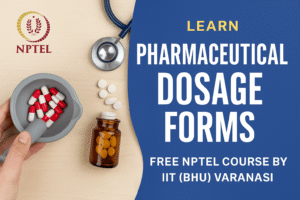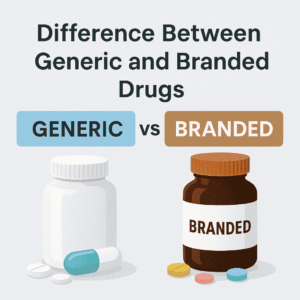In modern pharmacovigilance practice, Periodic Safety Update Reports (PSURs) and Development Safety Update Reports (DSURs) are cornerstone documents ensuring the continuous monitoring of a drug’s safety throughout its lifecycle. These reports are governed by internationally harmonized ICH guidelines and serve distinct but complementary purposes.
This guide explores PSUR and DSUR in depth, including their format, content, regulatory requirements, and strategic role in maintaining drug safety and regulatory compliance.

Table of Contents
What is a PSUR?
Definition
A Periodic Safety Update Report (PSUR)—referred to as a Periodic Benefit-Risk Evaluation Report (PBRER) in the EU—is a structured pharmacovigilance document that provides an evaluation of the risk-benefit balance of a marketed medicinal product at defined intervals.
Structural Components (as per ICH E2C(R2))
Introduction
Worldwide Marketing Authorization Status
Update on Actions Taken for Safety Reasons
Changes to Reference Safety Information (RSI)
Estimated Patient Exposure
Data Sources
Presentation of Individual Case Histories (ICSRs)
Summarized Safety Data (from spontaneous, clinical, literature, etc.)
Signal and Risk Evaluation
Benefit Evaluation
Integrated Benefit-Risk Analysis
Conclusion
Appendices (CIOMS Line Listings, Study Listings, etc.)
Reporting Frequency
| Product Stage | Frequency |
|---|---|
| New Market Authorizations | Every 6 months (first 2 years) |
| Later stage products | Annually, then every 3 years |
| EU centralized approvals | As per EU reference DLP schedule |
Regulatory Basis
- Governed by ICH E2C(R2)
- Mandatory in EU (PBRER), US, Japan, and many global markets
- Submissions via EVMPD (EU), FDA Gateway (US), etc.
What is a DSUR?
Definition
A Development Safety Update Report (DSUR) is an annual safety report required during the clinical development phase of an investigational drug. It consolidates clinical trial safety data and provides an evolving picture of the investigational product’s safety profile.
Structure of DSUR (as per ICH E2F)
Introduction
Worldwide Development Status
Update on Actions Taken for Safety Reasons
Status of Ongoing Clinical Trials
Cumulative Subject Exposure
Safety Data (Serious Adverse Events, Deaths, etc.)
Findings from Non-Interventional Studies
Manufacturing Changes
Nonclinical Data
Safety Evaluation
Summary of Significant Risks
Overall Safety Conclusion
Appendices (tabular listings of SAEs, SUSARs)
Submission Timing
Submitted annually from the date of first IND submission (Development International Birth Date – DIBD)
Applies globally (FDA, EMA, PMDA, Health Canada, etc.)
Regulatory Basis
- Governed by ICH E2F
- Mandatory under US IND regulations (21 CFR 312.33)
- Required in EU under Clinical Trial Regulation (EU) No 536/2014
PSUR vs DSUR – A Comparative Analysis
| Feature | PSUR / PBRER | DSUR |
|---|---|---|
| Drug Phase | Post-Marketing | Clinical Development (Pre-Marketing) |
| Regulatory Basis | ICH E2C(R2) | ICH E2F |
| Purpose | Evaluate cumulative safety in the market | Evaluate investigational product safety |
| Frequency | Variable (6M, 12M, 3Y) | Annually |
| Scope | Real-world ADRs, signal evaluation | Clinical trial data, preclinical findings |
| Audience | Regulatory authorities, MAHs | Regulators, sponsors, ethics committees |
Importance of PSUR and DSUR in Risk Management
- Early Signal Detection: Critical for identifying adverse trends or unexpected side effects.
- Regulatory Decision-Making: Supports product label changes, risk minimization plans, or market withdrawal if needed.
- Compliance: Avoids regulatory penalties, warning letters, or clinical hold notices.
- Transparency: Maintains scientific and ethical accountability in drug development and commercialization.
Final Thoughts
PSUR and DSUR play a pivotal role in the pharmacovigilance lifecycle—from early development to global marketing surveillance. Whether you are a clinical research professional, pharmacovigilance associate, or regulatory affairs specialist, mastering the structure, timelines, and strategic value of these documents is vital for career growth and compliance in the pharmaceutical industry.
Staying updated with ICH revisions, local regulatory changes, and safety signal detection methods ensures robust patient safety and product integrity.





This guide provides a detailed overview of the Site Monitoring Visit process, essential for ensuring the integrity of clinical trials. It highlights the importance of adherence to protocols and regulatory requirements. The inclusion of a free government-certified course on the rational use of medicines is a valuable resource for pharmacists. How can this guide improve the efficiency and accuracy of clinical trial monitoring? Given the growing economic instability due to the events in the Middle East, many businesses are looking for guaranteed fast and secure payment solutions. Recently, I came across LiberSave (LS) — they promise instant bank transfers with no chargebacks or card verification. It says integration takes 5 minutes and is already being tested in Israel and the UAE. Has anyone actually checked how this works in crisis conditions?
This guide provides a detailed overview of the Site Monitoring Visit process, essential for ensuring the integrity of clinical trials. It highlights the importance of adherence to protocols and regulatory requirements. The inclusion of a free government-certified course on the rational use of medicines is a valuable resource for pharmacists. How can this guide improve the efficiency and accuracy of clinical trial monitoring? German news in Russian (новости Германии)— quirky, bold, and hypnotically captivating. Like a telegram from a parallel Europe. Care to take a peek?